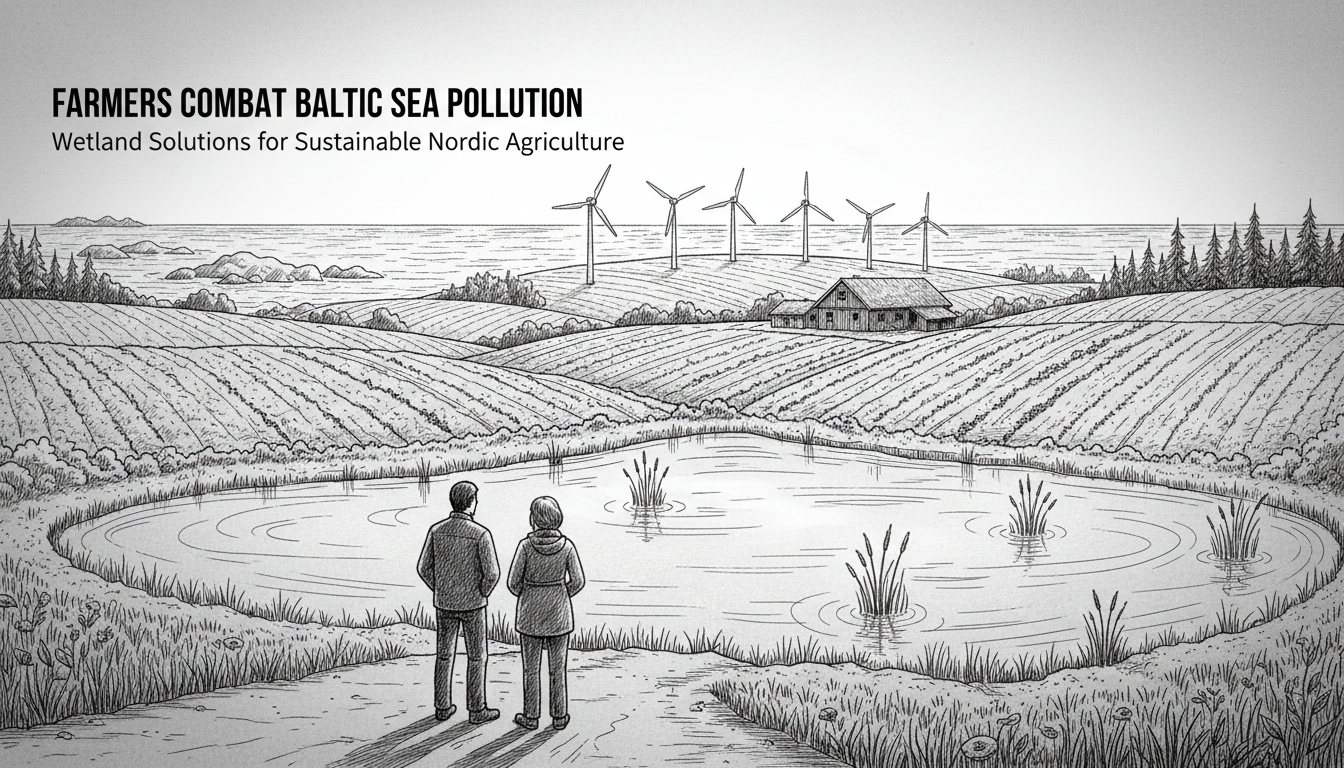Toxic swimming water, dead fish, and lifeless seabeds reveal the Baltic Sea's worsening condition. Climate change impacts become more visible each year. But the fight against marine death starts far inland on agricultural fields.
Farmer Erika Olsson recalls a pivotal moment. "The dry, hot summer of 2018 was a wake-up call for me," she explains. "We sowed crops twice and got no harvest. We had no animal feed, slaughterhouses were fully booked. We need to become more long-term in our water management."
Between two fields outside Nyköping, a series of small ponds form a gray-blue mosaic. This phosphorus dam functions as a specialized wetland designed to capture excess nutrients from surrounding soil. It prevents these nutrients from reaching Sätterstaån stream and eventually the already over-fertilized Baltic Sea.
Constructed in late autumn, this represents Olsson's second wetland project. Her first wetland transformed a narrow, unproductive field into a shallow water mirror where deer and moose now come to drink.
Olsson represents a growing movement among Swedish farmers adopting wetland solutions. Markus Hoffman, a sustainability expert with the Federation of Swedish Farmers, confirms the trend. "Interest among farmers for establishing wetlands is substantial," he notes, citing both environmental benefits and aesthetic appeal.
Farmers frequently express willingness to create wetlands if they receive assistance with planning, administration, and navigating the complex permit and funding processes. Olsson obtained support through the Nyköping Water Conservation Association and the EU project BaltCOP. These organizations employ approximately 50 local action coordinators nationwide who help farmers with project design and funding applications.
Hoffman describes this coordinated approach as "a new invention within Sweden's environmental framework that has proven effective."
Baltic Sea over-fertilization occurs when plant nutrients nitrogen and phosphorus leak into waterways. Approximately 100,000 tons of nitrogen and 3,000 tons of phosphorus enter the Baltic annually. Agriculture represents the primary source of nutrient leakage leading to over-fertilization, though transportation, treatment plant emissions, and industry also contribute to ecosystem damage.
Many farmers feel unfairly targeted as environmental villains, Hoffman observes. "First in the 1980s and 1990s nutrient leakage debate, and now 30 years later, they're not just environmental villains but climate villains. Wetlands represent a solution everyone can understand."
The multifunctional nature of wetlands makes them particularly valuable. "Many environmental and climate measures in agriculture might only provide climate benefits or water purification benefits," Hoffman explains. "With wetlands, you can check all the boxes. In this way, wetlands rarely go wrong."
This agricultural transformation represents a practical approach to environmental stewardship that benefits both farms and the broader ecosystem. As climate patterns become increasingly unpredictable, such nature-based solutions offer resilience while addressing critical environmental challenges. The growing network of farm wetlands demonstrates how local actions can collectively address regional environmental problems.

